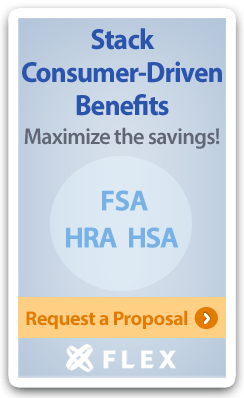Benefits Buzz
How to Determine FSA Administration Break-Even Point for Employers
Posted on August 22nd, 2017

Flexible Spending Accounts (FSAs) are one of the few benefits an employer can provide that often pays for itself (and then some). While there are expenses that will be incurred by the employer when using a third-party administrator for the FSA, there are also payroll tax savings that will offset some or all of those expenses.
The Federal Insurance Contributions Act (FICA) is a payroll tax imposed on employees and employers to fund Social Security and Medicare. FICA taxes amount to 15.3% of the employees’ wages, but the tax is split equally between the employee and employer. The employee is assessed a 7.65% tax, and the employer is also assessed a 7.65% tax.
However, a key feature of FSAs is that contributions are not subject taxes, including FICA taxes. Not only does the employee save taxes on their contributions, but the employer also reduces their FICA tax liability by offering an FSA. In many instances, the tax savings to the employer are equal to or greater than the administrative expenses associated with an FSA.
There is a simple formula to determine when contributions will provide enough tax savings to offset the FSA administrative expenses:
Annual FSA Administrative Expenses ÷ 7.65%
Let’s assume the annual cost for an employer to administer an FSA is $1,000. We’re going to take that expense and divide it by the employer’s FICA tax percentage (which should be entered as .0765).
$1,000 ÷ .0765 = $13,072 (rounded to nearest dollar)
When total employee contributions are at $13,072, the employer will save $1,000 in FICA taxes, which is the exact amount of the administrative expenses for the FSA in this example. This formula tells the employer their break-even point. And, if contributions exceed $13,072, the employer’s FICA tax savings will be greater than their administrative expenses.
FSAs truly are a benefit that can pay for itself. Plus, there are two different kinds of FSAs an employer can offer. Health FSAs allow employees to pay for out-of-pocket medical expenses with tax-free dollars. Dependent Care FSAs allow employees to pay for things like daycare with tax-free dollars. By offering both FSAs, an employer can easily meet or exceed their break-even point, making it a win-win for everyone.

